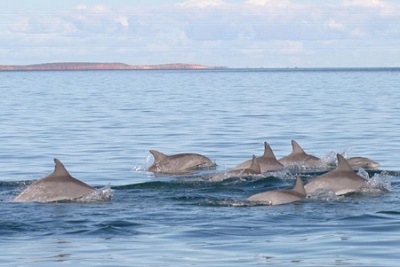Dolphins behave uniquely. On the one hand, male dolphins form alliances with others; on the other hand, they live in an open social structure. Anthropologists detected this unusual behavior in the animal kingdom in dolphins.
Male dolphins display the most complex group behavior of all mammals after us humans. Studies in the 1990s revealed that two to three male dolphins cooperate very closely with each other to isolate female dolphins from the main group for mating. Sometimes, these so-called “first-order” alliances join forces to steal females that have been monopolized by other alliances.
To a degree, however, this higher-level bond among males is highly opportunistic and can change depending on the context. The formation of alliances in dolphins is only comparable with that of humans in terms of complexity.
A new study by researchers and Michael Krützen now proves that these male alliances are based on an open social structure. Dolphins have multifaceted relationships with other individuals within a complex network without an obvious group structure, placing them almost on a par with us humans. This begs a comparison with the social structure of chimpanzees. Chimpanzee males also form alliances, but only between social groups, which enable them to defend their territory against members of the same species from other groups. However, this is not the case with dolphins: They defend the females.
Another explanatory model would be that dolphin males only defend females during the mating season and thus avoid each other as far as possible. However, this hypothesis does not apply to dolphins, either, as the observation of over 120 adult dolphins in an area of around 600 square kilometers revealed. “Our study shows for the first time that the social structure and associated behavior of dolphins is unique in the animal kingdom,” explains Krützen.
Group behavior and the social structure of other species have always fascinated biologists; can we learn something about ourselves from them? The comparison of humans with apes, elephants and dolphins, all of which are species with large brains and highly developed cognitive skills, enable conclusions regarding the evolution of group behavior in humans to be drawn.
Source: Science daily
N.H.Kh

